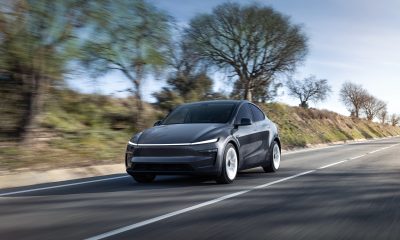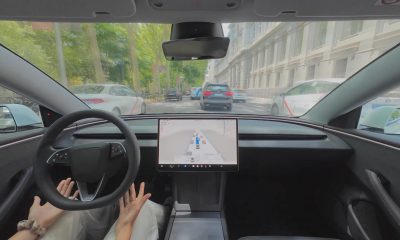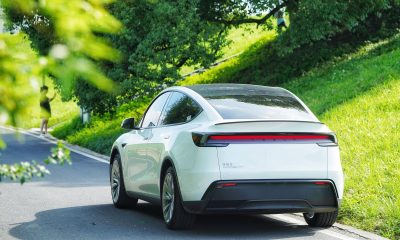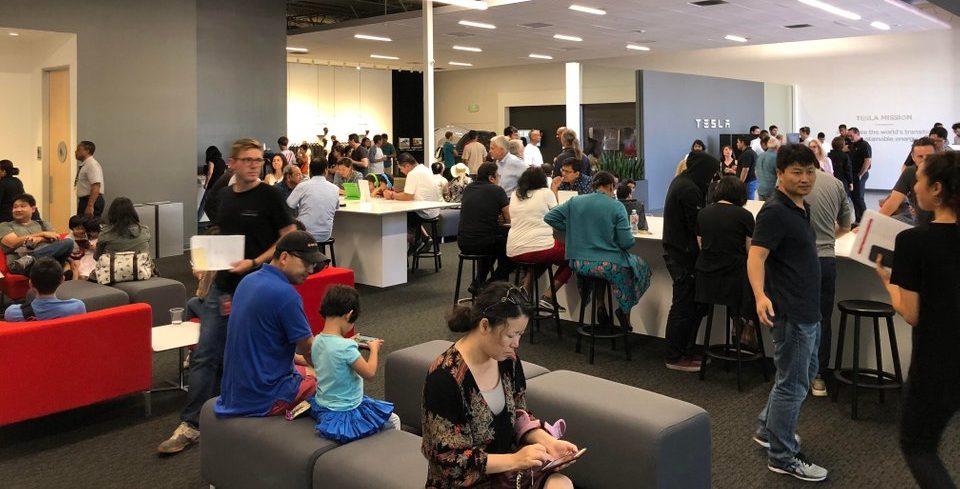

Investor's Corner
Tesla’s volunteer-boosted Model 3 delivery weekend is a wake-up call for legacy auto
If social media posts and anecdotes from participating owners are any indication, it appears that Tesla’s volunteer-boosted Model 3 delivery weekend is looking to be a success. As Tesla’s volunteers aid the company in orienting large numbers of new owners with their vehicles, the demand for quality electric cars is becoming more evident than ever.
This weekend saw something remarkable happen in the Tesla community. With the company currently attempting to address Elon Musk’s self-dubbed “delivery logistics hell,” some owners of Tesla’s electric cars stepped forward to offer help. The idea was initially pitched by IGN reporter and Ride the Lightning podcast host Ryan McCaffrey on Twitter, and Elon Musk promptly greenlighted the suggestion, stating that any help would be greatly appreciated. The community mobilized itself immediately, and by Saturday, Tesla’s delivery centers had volunteers who were ready to help new owners with the features and functions of their electric cars. Even Elon Musk himself was in Fremont’s center, interacting with new owners.
Hanging out with @elonmusk while waiting for our new cars @Tesla pic.twitter.com/2UjGyYkD5u
— Bradley Wong (@brawong) September 23, 2018
Reports on social media and in forums such as the r/TeslaMotors subreddit suggest that Tesla’s volunteer-augmented delivery efforts have been largely successful. One such account came from r/TeslaMotors subreddit member and Model 3 owner u/jpbeans, who narrated his experience as a volunteer in one of Tesla’s delivery centers. According to the Model 3 owner, Tesla gave them Guest badges, and they ended up helping owners on several topics, from basics like opening the Model 3’s door handle, to navigating the car’s functions through the 15″ touchscreen.
On Twitter, similar accounts were shared. Twitter user @GuyTesla, who volunteered in Tesla’s Littleton delivery center on Saturday, even noted that a nearby Jaguar dealership inquired how Tesla would be able to store the vehicles being delivered to the site. When informed that the electric cars were not staying in the facility, the staff of the legacy automaker were reportedly a bit shocked.
Hilarious highlight of the day: The Jaguar dealers that had just moved in next-door to Tesla Littleton commented on all of the truck carriers of cars showing up, and asked, “where are you going to put all of these?” And the answer was “They aren’t staying.”
Sad faces…
— 🐍🎷 Tesla Guy 🎷🐍 (@GuyTesla) September 23, 2018
Inasmuch as the Littleton volunteer’s observations are but an anecdote in an otherwise busy delivery weekend, the demand for premium electric vehicles should be undeniable by now. Over the years, Tesla’s electric cars, despite the company’s teething challenges, proved successful in their respective segments. With the Model 3, Tesla has begun an attack into the mainstream auto market, and the electric sedan is starting to make some waves. In August alone, the Model 3 became the 5th best-selling passenger car in the US, being outsold only by the Toyota Camry, Honda Civic, Honda Accord, and the Toyota Corolla Family, all of which are lower-priced vehicles.
Tesla is pretty much unchallenged in the premium electric car market, though highly-anticipated competitors such as the Mercedes-Benz EQC and the Audi e-tron have recently been unveiled. While these vehicles have long been hyped as possible “Tesla-killers” due to their manufacturers having decades of experience in the auto industry, the performance of the vehicles, as well as their battery tech, seemed to be a bit subpar compared to Tesla’s electric cars. This was addressed by Bernstein analyst Toni Sacconaghi recently, when he noted that contrary to a prevalent bear thesis, there is “no actual flood of competition coming” for Tesla’s vehicles.
The recent offerings of premium legacy automakers have caught the attention of Christina Bu, General Secretary of the Electric Vehicle Association in Norway. Norway is among the world’s leaders in the electric car transition, and it is one of the countries where Tesla’s vehicles hold a formidable place. After the reveal of some of Tesla’s competitors from legacy automakers, the EVA General Secretary proved unimpressed, calling on manufacturers to “stop pretending and start delivering” on real electric cars that have compelling performance and features. Bu further noted that the strong demand for affordable, decently-specced vehicles like the Kia Niro Electric and Hyundai KONA Electric, is proof that consumers are ready to embrace EVs.
Tesla is pretty much only halfway through its efforts of ramping the production of the Model 3. This third quarter, Tesla is aiming to produce 50,000-55,000 Model 3 — a record number of vehicles but still only a fraction of its planned 10,000/week production rate for the electric sedan. Tesla eventually plans to build 500,000 Model 3 per year, and its upcoming crossover SUV, the Model Y, is expected to hit a production rate of 1 million units per year. Even when the company achieves these targets, though, the auto industry could not transition into the electric car era on Tesla alone — other manufacturers, particularly those with decades of experience, must embrace the shift as well. As Norway’s General Secretary of the EVA noted, the time is now to “stop pretending and start delivering.”
Elon Musk
Tesla analyst issues stern warning to investors: forget Trump-Musk feud
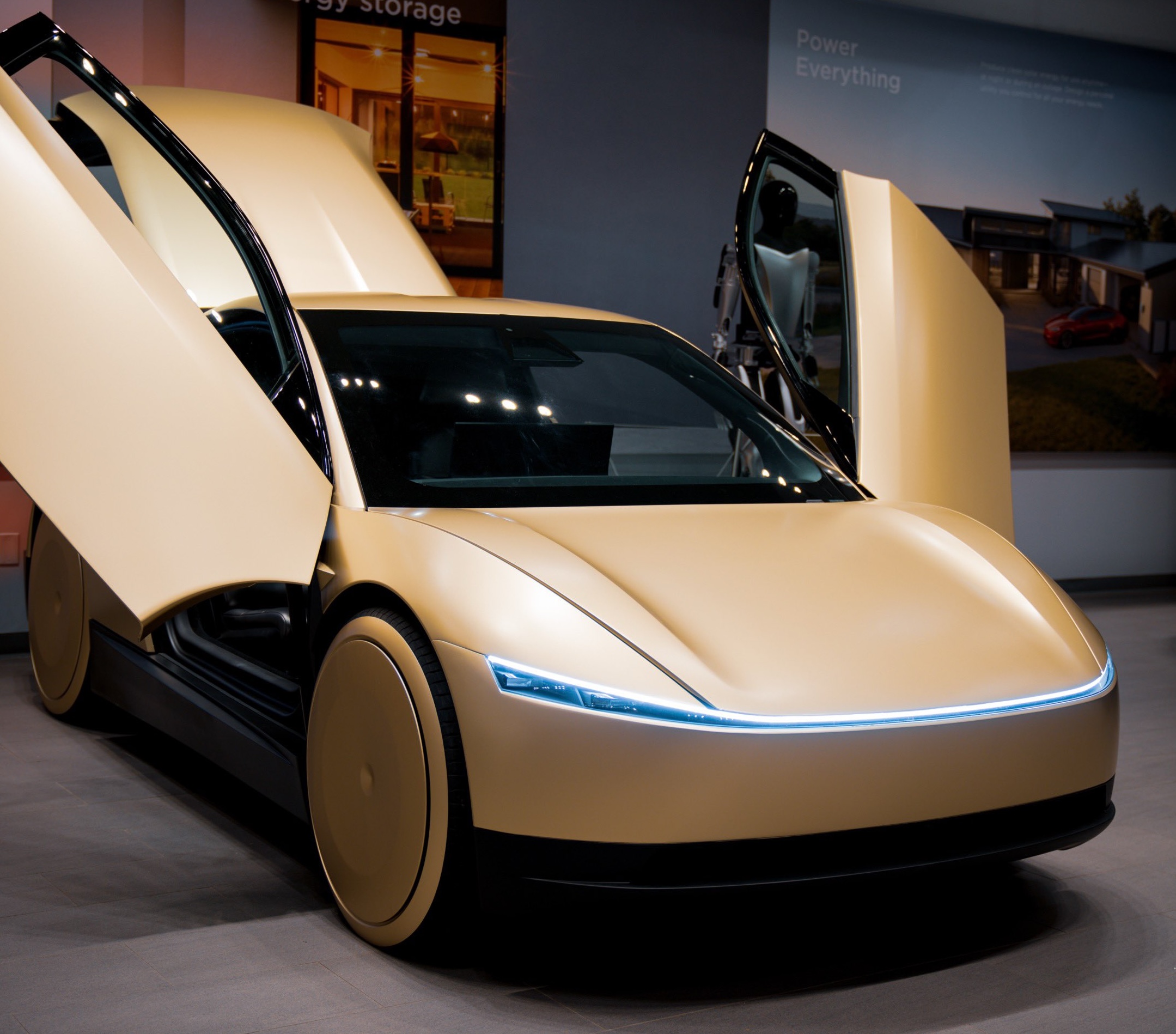
A Tesla analyst today said that investors should not lose sight of what is truly important in the grand scheme of being a shareholder, and that any near-term drama between CEO Elon Musk and U.S. President Donald Trump should not outshine the progress made by the company.
Gene Munster of Deepwater Management said that Tesla’s progress in autonomy is a much larger influence and a significantly bigger part of the company’s story than any disagreement between political policies.
Munster appeared on CNBC‘s “Closing Bell” yesterday to reiterate this point:
“One thing that is critical for Tesla investors to remember is that what’s going on with the business, with autonomy, the progress that they’re making, albeit early, is much bigger than any feud that is going to happen week-to-week between the President and Elon. So, I understand the reaction, but ultimately, I think that cooler heads will prevail. If they don’t, autonomy is still coming, one way or the other.”
BREAKING: GENE MUNSTER SAYS — $TSLA AUTONOMY IS “MUCH BIGGER” THAN ANY FEUD 👀
He says robotaxis are coming regardless ! pic.twitter.com/ytpPcwUTFy
— TheSonOfWalkley (@TheSonOfWalkley) July 2, 2025
This is a point that other analysts like Dan Ives of Wedbush and Cathie Wood of ARK Invest also made yesterday.
On two occasions over the past month, Musk and President Trump have gotten involved in a very public disagreement over the “Big Beautiful Bill,” which officially passed through the Senate yesterday and is making its way to the House of Representatives.
Musk is upset with the spending in the bill, while President Trump continues to reiterate that the Tesla CEO is only frustrated with the removal of an “EV mandate,” which does not exist federally, nor is it something Musk has expressed any frustration with.
In fact, Musk has pushed back against keeping federal subsidies for EVs, as long as gas and oil subsidies are also removed.
Nevertheless, Ives and Wood both said yesterday that they believe the political hardship between Musk and President Trump will pass because both realize the world is a better place with them on the same team.
Munster’s perspective is that, even though Musk’s feud with President Trump could apply near-term pressure to the stock, the company’s progress in autonomy is an indication that, in the long term, Tesla is set up to succeed.
Tesla launched its Robotaxi platform in Austin on June 22 and is expanding access to more members of the public. Austin residents are now reporting that they have been invited to join the program.
Elon Musk
Tesla surges following better-than-expected delivery report
Tesla saw some positive momentum during trading hours as it reported its deliveries for Q2.

Tesla (NASDAQ: TSLA) surged over four percent on Wednesday morning after the company reported better-than-expected deliveries. It was nearly right on consensus estimations, as Wall Street predicted the company would deliver 385,000 cars in Q2.
Tesla reported that it delivered 384,122 vehicles in Q2. Many, including those inside the Tesla community, were anticipating deliveries in the 340,000 to 360,000 range, while Wall Street seemed to get it just right.
Tesla delivers 384,000 vehicles in Q2 2025, deploys 9.6 GWh in energy storage
Despite Tesla meeting consensus estimations, there were real concerns about what the company would report for Q2.
There were reportedly brief pauses in production at Gigafactory Texas during the quarter and the ramp of the new Model Y configuration across the globe were expected to provide headwinds for the EV maker during the quarter.
At noon on the East Coast, Tesla shares were up about 4.5 percent.
It is expected that Tesla will likely equal the number of deliveries it completed in both of the past two years.
It has hovered at the 1.8 million mark since 2023, and it seems it is right on pace to match that once again. Early last year, Tesla said that annual growth would be “notably lower” than expected due to its development of a new vehicle platform, which will enable more affordable models to be offered to the public.
These cars are expected to be unveiled at some point this year, as Tesla said they were “on track” to be produced in the first half of the year. Tesla has yet to unveil these vehicle designs to the public.
Dan Ives of Wedbush said in a note to investors this morning that the company’s rebound in China in June reflects good things to come, especially given the Model Y and its ramp across the world.
He also said that Musk’s commitment to the company and return from politics played a major role in the company’s performance in Q2:
“If Musk continues to lead and remain in the driver’s seat, we believe Tesla is on a path to an accelerated growth path over the coming years with deliveries expected to ramp in the back-half of 2025 following the Model Y refresh cycle.”
Ives maintained his $500 price target and the ‘Outperform’ rating he held on the stock:
“Tesla’s future is in many ways the brightest it’s ever been in our view given autonomous, FSD, robotics, and many other technology innovations now on the horizon with 90% of the valuation being driven by autonomous and robotics over the coming years but Musk needs to focus on driving Tesla and not putting his political views first. We maintain our OUTPERFORM and $500 PT.”
Moving forward, investors will look to see some gradual growth over the next few quarters. At worst, Tesla should look to match 2023 and 2024 full-year delivery figures, which could be beaten if the automaker can offer those affordable models by the end of the year.
Investor's Corner
Tesla delivers 384,000 vehicles in Q2 2025, deploys 9.6 GWh in energy storage
The quarter’s 9.6 GWh energy storage deployment marks one of Tesla’s highest to date.
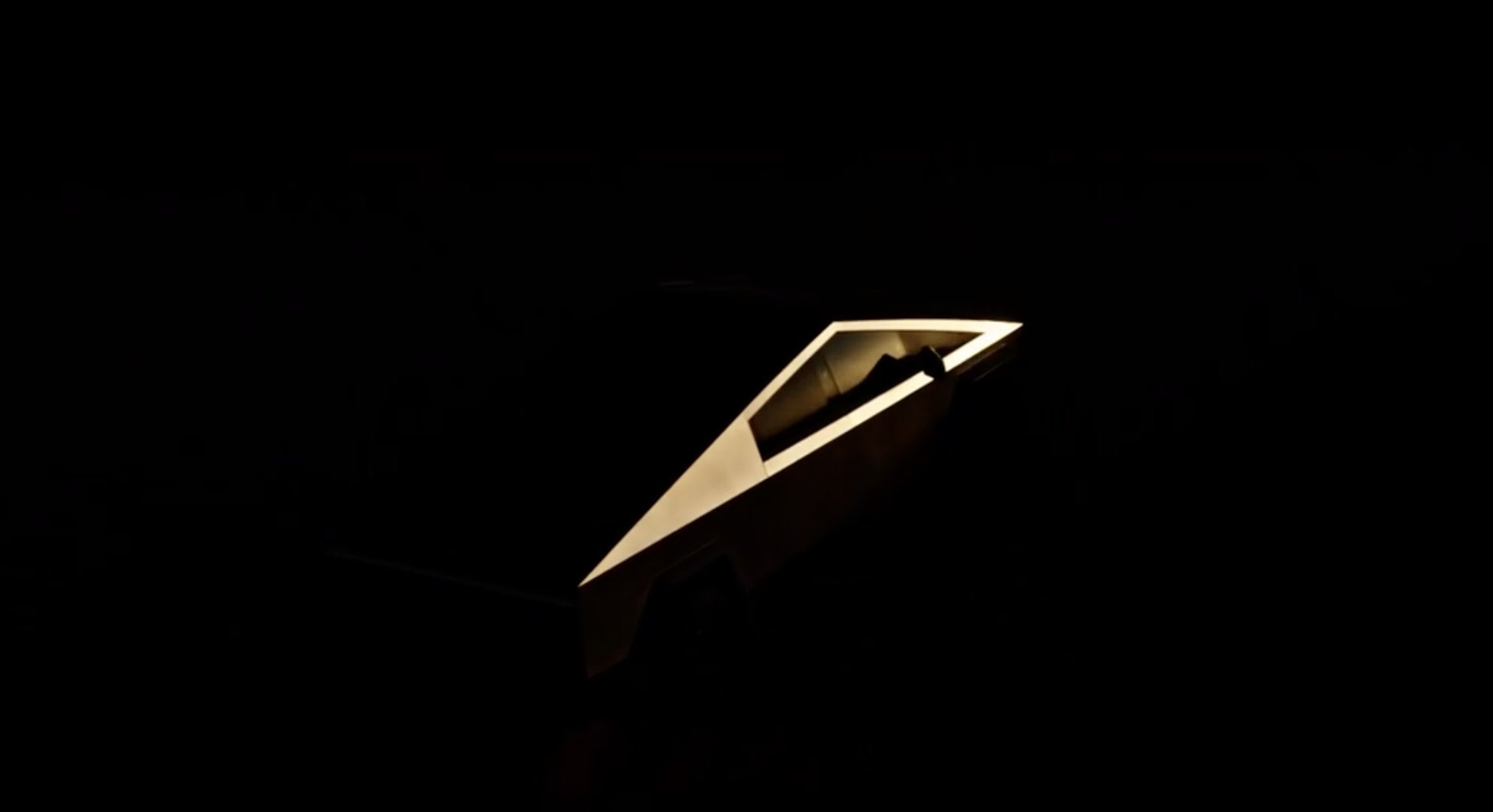
Tesla (NASDAQ: TSLA) has released its Q2 2025 vehicle delivery and production report. As per the report, the company delivered over 384,000 vehicles in the second quarter of 2025, while deploying 9.6 GWh in energy storage. Vehicle production also reached 410,244 units for the quarter.
Model 3/Y dominates output, ahead of earnings call
Of the 410,244 vehicles produced during the quarter, 396,835 were Model 3 and Model Y units, while 13,409 were attributed to Tesla’s other models, which includes the Cybertruck and Model S/X variants. Deliveries followed a similar pattern, with 373,728 Model 3/Ys delivered and 10,394 from other models, totaling 384,122.
The quarter’s 9.6 GWh energy storage deployment marks one of Tesla’s highest to date, signaling continued strength in the Megapack and Powerwall segments.

Year-on-year deliveries edge down, but energy shows resilience
Tesla will share its full Q2 2025 earnings results after the market closes on Wednesday, July 23, 2025, with a live earnings call scheduled for 4:30 p.m. CT / 5:30 p.m. ET. The company will publish its quarterly update at ir.tesla.com, followed by a Q&A webcast featuring company leadership. Executives such as CEO Elon Musk are expected to be in attendance.
Tesla investors are expected to inquire about several of the company’s ongoing projects in the upcoming Q2 2025 earnings call. Expected topics include the new Model Y ramp across the United States, China, and Germany, as well as the ramp of FSD in territories outside the US and China. Questions about the company’s Robotaxi business, as well as the long-referenced but yet to be announced affordable models are also expected.
-

 Elon Musk4 days ago
Elon Musk4 days agoTesla investors will be shocked by Jim Cramer’s latest assessment
-

 News1 week ago
News1 week agoTesla Robotaxi’s biggest challenge seems to be this one thing
-

 Elon Musk2 weeks ago
Elon Musk2 weeks agoFirst Look at Tesla’s Robotaxi App: features, design, and more
-

 News2 weeks ago
News2 weeks agoSpaceX and Elon Musk share insights on Starship Ship 36’s RUD
-

 News2 weeks ago
News2 weeks agoWatch Tesla’s first driverless public Robotaxi rides in Texas
-

 News1 week ago
News1 week agoWatch the first true Tesla Robotaxi intervention by safety monitor
-

 News2 weeks ago
News2 weeks agoTesla has started rolling out initial round of Robotaxi invites
-

 Elon Musk2 weeks ago
Elon Musk2 weeks agoTesla to launch in India in July with vehicles already arriving: report


